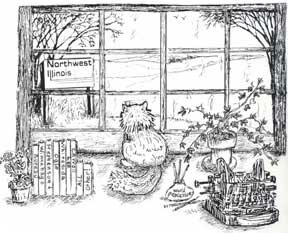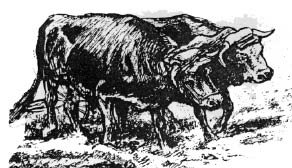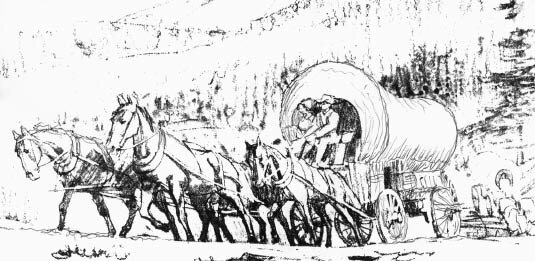
Discover rewarding casino experiences. 
|
That must have been one valuable horse, eh?! Rumor had it that the Indians had gone south towards their “headquarters” at Rock Island so Upton hiked off for there and found the horse in a large herd of Indian ponies. The grass being tall there, he crept through it towards the horse and on reaching it could fling a halter over its head, murmuring softly to it all the while. He slowly sidled through tall grass on knees and stomach until near the edge of a timber, he mounted the animal and clucked it forward. Just then a band of Indians emerged from the woods and saw him and began running, throwing their guns to their shoulders, hastily firing. Bob dug in his heels, urged the horse to a trot, then a gallop, meanwhile laying against the horses neck, then sliding over to one side, clinging to the mane to hang on the far side away from the yelping Indians as it sped onward. A quiver shuddered through its body and Upton knew it must have been hit by a bullet. Looking up, he saw a slight flesh wound between its ears but the gallant beast did not falter. Soon they far out-distanced the pursuers. Capt. Smith soon had his horse. And we assume Upton received his $200. That is but one story about the frontiersman mentioned in last week’s item of the settling of the Northwest ... “The wild, daring, generous-spirited” Bob Upton who was known as a “noted character.” How else would we know Bob if not for the few tales that are told about him. We have to picture him escaping the Indians at the blockhouse at the Plum River settlement that became Savanna. And “See” him in our mind’s eye on the side of a beautiful, speeding horse galloping along the riverside, a scene that could be achieved only by a daring, dashing hero like Bob. And he was a “49’er.” Although Bob Upton was one among thousands, he was OUR character and as the television channel advertises, “Characters welcome.” In this small way we pay tribute to him. Salute.
There is little to be found, as far as we know, about the Gold Rush chapter in the history of the Northwest. After all, we had the first mineral rush in American history with the press for lead beginning in the 1820’s, early ‘30’s and on. The Lead Rush opened up the Midwest and beyond by trails leading to the mines and the settling up of the land to become the wonderful place it is today. The Gold Rush was much larger and, of course, made us the nation we became. Our ancestors were a part of it. PDQ Me had a few articles about other aspects of the Gold Rush ... “Ten Top Reasons to Go to the Gold Rush” and etc. (See PDQ Me, 1992: January 8 - Miss. Ox Co.; January 15 & 22 - “In God We Trusted” and February 12 - “In California We Busted.”) The names and incidents here are “another story.” Judge Emmert, as David Emmert was generally known at the time, was a frontiersman, too. But he was a conservative, practical frontiersman, different than Bob Upton in most ways. He had come West in 1840 and took over the Cherry Grove Tavern which was a prominent stage stop begun by Tom Crain in the period 1830-34. It was a major stay on the Peoria-Galena Trail which opened the lead mines to overland travel. Emmert had intelligence, education and money to further his plans for bringing “civilization” to the West. He saw that the prospects were not just in lead but in the land, businesses and investment. He and partners were interested in mill sites, mills being the most important investments of the period ... For turning timber to lumber and/or grains to meal and flour. That condition is seen in his investments with others in a mill site on the Waukarusa in the center of the County with the land around it. The idea had been to move the county seat from Savanna to the middle of the planned Carroll, a mount, mind you, and where the partners offered to build a stone courthouse because the county’s budget couldn’t afford one. The stipulation was that church services be held there of Emmert’s denomination that become a dominant one as time passed. Judge Emmert held many positions of honor through the years and so helped further the progress of the county and Northwest. It was no surprise that when the Gold Rush occurred he’d also see the possibilities in the investment in it. No, not as an on-site prospector but funding others, a prospectus. He’d fund three wagons with two yoke of oxen each, supplies and foods with the “49’ers” aboard searching for gold in his name ... Probably a percentage, don’t you think?! Emmert’s son, Simon, was part of the group as were Daniel Brown, Joe Strickler, the Reynolds brothers, B.W. and J.L. with also, Nate Sutton who’d come West with Zack Kinkade, Jacob Traxell of Pleasant Valley, Merriman Van Gaston. George Goltman and Joe Ganson; the latter two never returned home. Ganson leaving a wife and two children. If their fates were otherwise known reference does not give. Reference states, too, that Hugh Taylor of that group was “grub-staked” by several such as by James O’Brien, meaning a sponsor, sometimes more than one would fund a gold seeker with whom there’d be a share of the take. A man was sent by Emmert to St. Louis prior to the “49’ers” departure to make arrangements and buy supplies (bacon and flour being specifically mentioned). Those all to be shipped up the Missouri River to just below Council Bluff, Iowa where the wagon train would pick them up for the procession West across the Plains and mountains. There were no stores or convenience stops along the way. The sponsored or grub-staked party left Mt. Carroll March 23, 1850 ferrying themselves across the Mississippi at Savanna and then to travel through Iowa, then separately settled, of course. When reaching the meeting place about eight miles below Council Bluffs, they waited about a week for the supplies to catch up to them. Meantime, they lashed two wagon boxes together, sealed them water tight and generally fixing them to ferry supplies and goods across the rolling Missouri, swollen by spring rains. By then there were about sixty to eighty men at the camp. Evan Rea of Mt. Carroll was elected captain to coordinate things and issue orders, and so forth. Rea had arrived there with another group but came over to the Carroll County one, the Emmert party, with also James Trail and Harlan and George Pyle thus adding more numbers at the starting point. That venerable pioneer, William A.J. Pierce, had been chosen to “carry the purse” and to pay expenses along the way but, naturally, “To be as economical as possible!” Then, as now, travel expenses exceeded the purse so even before reaching the mountains they had no funds. Like many another party they stopped at Salt Lake City to work for the Mormons. That industrious sect had about all the labor they needed to build their new city because inexperience led most of the traveling parties to run out of funds. One of the group, Jacob Traxell, was noted as having joined the Mormon religion while there although it doesn’t state if he stayed there or not.
In fact, there are few details given in the little known references that are extant of the “49’ers” journey. Or how many remained in California or in the West. How they returned when they came back to Illinois and if they’d made any fortune in the gold fields. What little news is known will be repeated here next week. D.G. Shottenkirk, however, was said to have been appointed to keep a diary of the trek and return it to Judge Emmert. It was reported that it did not reach its destination. Then, later it was discovered to have been printed in an early issue of the Mt. Carroll Tribune, Vol. 1, #18, the first newspaper published in Carroll County. As only excerpts of it were found, that valuable part of our county’s history has been mostly lost. Shottenkirk’s journal, in small part, is printed for us to read and make us wonder what else occurred and of the terrible hardships and tragedies that were experienced by our forefathers in the Big Chapter of the Gold Rush. —Next week.
|






